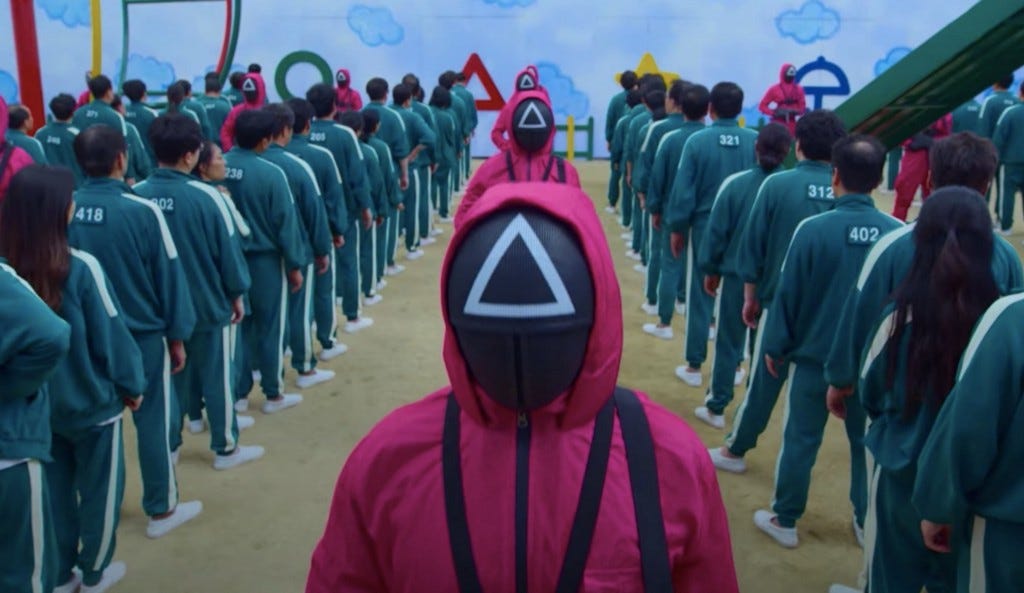It’s time to evolve the 40-hour workweek
Shorter workweeks will boost our productivity and quality of life
In 1930, the renowned British economist John Maynard Keynes sat in his armchair and thought about what his great-great-grandkids’ generation would be doing in the year 2030. Based on the way things were going, he mused that people in industrialized nations like the UK and US would work less and less over time. And 100 years onward, he thought, people would only be working 15-hour weeks.
Instead of pouring their entire lives into work, Keynes saw the people of the future spending more time on other aspects of human life, like relationships, creativity, and hobbies:
“[Man] will be faced with his real, his permanent problem — how to use his freedom from pressing economic cares, how to occupy the leisure, which science and compound interest will have won for him, to live wisely and agreeably and well.”
In an age where you already got 3 Slack pings reading this article, Keynes’ 15-hour work week sounds like pure fantasy. But he was onto something. Reducing the workweek under 40 hours will go a long way to increase everyone’s freedom and quality of life. And business leaders will find that compressing the workweek will increase productivity for knowledge workers.
Why did Keynes think we could work less?
In his original paper “Economic Possibilities for our Grandchildren,” Keynes pointed out that better technology and processes would allow workers to produce more output per hour worked. He was wrong — about how fast productivity would increase. The US exceeded his 2030 prediction sometime in the 1980s, and still hasn’t stopped climbing:
Labor productivity in the US has grown over the last 70 years by well over 200%. Workers have been able to demand higher wages as a result¹. Keynes believed that people would be able to better satisfy their basic needs (food, water, shelter, etc.) and therefore need to work less and less.
As long as we’re conscious of how much we consume beyond our basic needs, Keynes’ theory goes, 15-hour week is bound to happen.
How did we even get to the 40-hour workweek?
Keynes and economists like him advocated for people reducing work hours in order to expand time for leisure and self-discovery. But in parallel, ‘productivity hackers’ have had a long and storied history of reducing the workweek.
Henry Ford was one such productivity hacker. Prompted by labor unions, he experimented with various workweek configurations in the 1910s and 1920s. At the time, it was standard for factory workers and other laborers to work 6 days, or 48 hours, a week. In 1926, Ford announced that his factory line workers would move to a 5-day (40-hour) workweek, but still keep a full 6 days of pay.
The rest of the auto industry watched in shock as it saw Ford’s worker retention and productivity shoot up. With the expanded leisure time, Ford workers could consume more (buying, for instance, more Ford vehicles), bolstering the bourgeoning Detroit economy.
In Ford’s own words:
“The people with a five day week will consume more goods than the people with a six day week. People who have more leisure must have more clothes. They must have a greater variety of food. They must have more transportation facilities. They naturally must have more service of various kinds.”
The rest of the industry quickly followed, and by 1940, the US standardized around a 40-hour week.
So, looks like worker productivity has already been ‘hacked’ by Ford and co. Shouldn’t we consider it a success that we’re now on the 40-hour week? Why try to fix something that ain’t broke?
The world is, needless to say, different than it was in 1940. For one, knowledge work has expanded, requiring workers to be creative, recall and synthesize large amounts of information, and collaborate across large teams.
Some signs point to people tiring of mental work faster than they would physical labor. A study of 2000 office workers showed that people only have 3 productive work hours in a typical day, despite being in the office for 8. Another study of nurses in Sweden showed that 6-hour days (vs 8) resulted in fewer sick days, improved health, and higher quality care for their elderly patients.
We need larger scale studies before claiming anything for certain. But just like Ford did 100 years ago, we shouldn’t assume that the existing workweek actually works for all situations today.
Why do people (still) work so much?
A Gallup survey measured that full-time workers in the US actually spend, on average, 47 hours a week working. It’s as if they’ve crammed another workday into the supposedly 5-day workweek.
There are many potential reasons why people are working at full throttle, each of which could be the subject of another blog post. Here are just a few:
Things like healthcare and college degrees are rising quickly in price every year, so people may try to be keeping up.
Working hard may be a status symbol, especially for elite jobs in finance and tech.
Companies also tend to deploy benefits designed to keep workers at the office longer, like free meals or Ubers back home after 10pm.
The use of always-on instant messaging at work (e.g. Slack) may be making it difficult to avoid work, even at home or during travel.
An intense work ethic with minimal leisure may be something especially encouraged in some religious and immigrant cultures.
Everyone has a right to decide how they spend their time. Some may choose to work exceptionally long hours out of financial necessity or a genuine love for their work. But for the vast majority of people, people would rather choose to ‘work to live’ rather than ‘live to work.’
Has anyone tried reducing the workweek?
Okay, you say, maybe there’s some evidence we work more than we should. But then why haven’t companies and organizations been reducing hours for workers?

Fortunately, a few have already. In Auckland, New Zealand, a study of 240 employees of Perpetual Guardian let workers work a 4-day week while still getting paid the same as a 5-day one. Productivity increased by 20%, and work-life balance scores went up by 24 percentage points. Supervisors noted “staff were more creative, their attendance was better, they were on time, and they didn’t leave early or take long breaks.”
In Iceland, the Reykjavík city government cut the workday to either 35 or 36 hours, seeing output and costs remaining the same. Meetings became more efficient or switched to email entirely. Now, nearly 90% of the working population in Iceland has reduced hours or have the right to request them.
And in Japan, Microsoft reduced the workweek to 4 days and saw a 40% increase in productivity — and even 59% fewer pages printed.
Several other research trials or transitions are in the works in Spain, Belgium, and Japan, to name a few. To gain a competitive edge in hiring workers, many companies are becoming early adopters of a 4-day workweek as well.
Where do we go from here?
Pushing for change can take effort. But every big idea originally seemed crazy: just consider how many people laughed at the idea of moving to a 40-hour workweek before it became law in 1940.
Momentum can come from many different directions: further research, organizational advocacy, and — critically — engaging in the broader cultural dialogue about work and its place in our lives.
On the research front, more studies need to be run to determine the effects of shorter workweeks on worker productivity. Broader geographic and industry pilot coverage would be helpful to monitor the various impacts of shortening the week. And with remote work tools, we can track other productivity indicators under a 4-day regime, like Zoom meetings that start on time or reductions in software bugs.
To get research studies underway, advocacy will be necessary. Companies and organizations have many stakeholders to persuade on the matter, and the quality of a pilot rollout depends on the coordination between them. Certain types of organizations (e.g. that have less of an obligation to serve customers 5 days a week) may be better candidates to pilot the changes than others.
Finally, some of the most effective tools to transition to a shorter workweek will be engaging with the broader cultural dialogue. The dialogue we have with others — whether on Twitter or the TV shows we watch — can help us achieve a better collective understanding of where work fits into modern life. Just take a look at Squid Game and how it has propelled so many topics on money and inequality into the mainstream.
Ultimately, these standards for how or how much we work are not set in stone. They are social constructs that we get to define and mold ourselves.
What can I do now?
If you are interested in learning about and supporting more efforts for the 4-day workweek, here are a few avenues you can take:
Get Updates: by following Caution: Work In Progress, you’ll get updates whenever a new study on the 4-day workweek is published
Job Applicants: Check out 4dayweek.io, which lists 4-day friendly jobs at companies like Headspace, Bolt, and Monograph
US Companies: Enroll your company or organization in the 4 Day Week US Pilot Program which runs Apr-Sep 2022
¹ Sadly, worker wages have not risen as fast as their productivity has — an important topic for another post.
² Japan, the world’s 3rd largest economy, is a bit of an unhappy outlier among its peers. The country is grappling with many of the deadly consequences of its overwork culture, to the point that the government is actively trying to push workers towards a 4-day work week for their own benefit.
It’s time to evolve the 40-hour workweek was originally published in Progress in Work on Medium, where people are continuing the conversation by highlighting and responding to this story.











One challenge I've struggled with: for many, work *is* their form of enjoyment. They pick a career they love. And so bundling the "I must do it" from the "I choose to do it" parts of work is hard.
(For many, though, of course every extra hour of work is still something they'd rather avoid...)